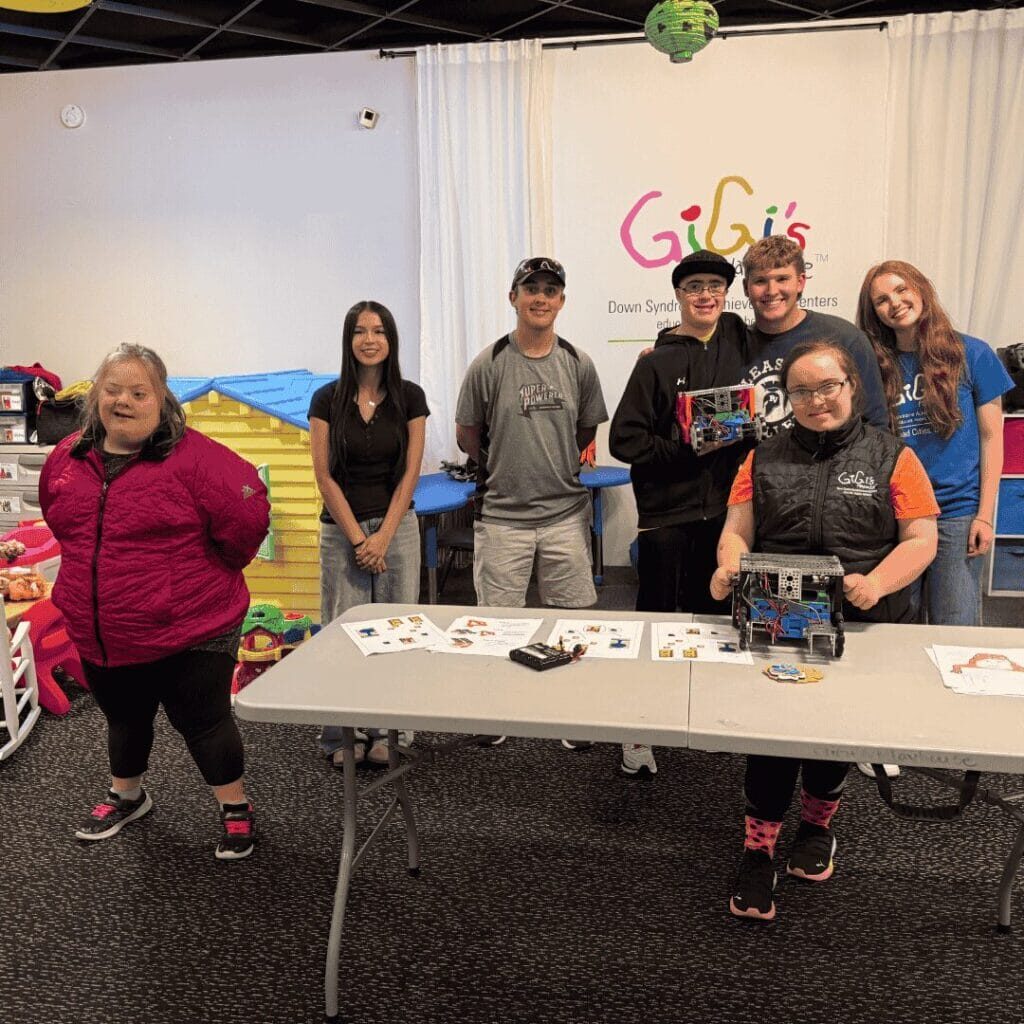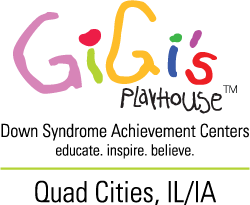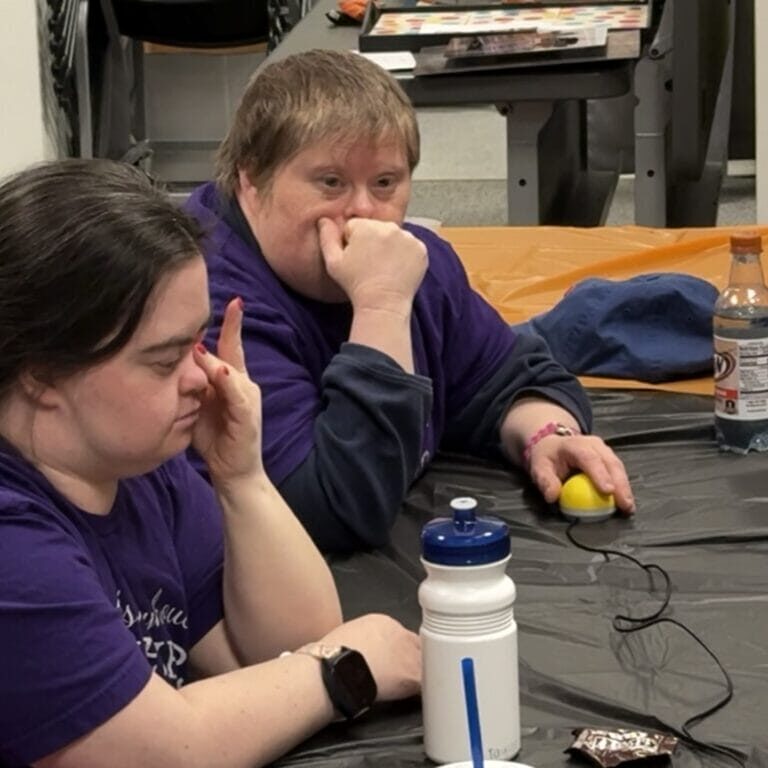13 Tips from an Occupational Therapist
For Occupational Therapists, one of our major concerns is helping people to be functionally independent with their daily tasks and routines – i.e. dressing, grooming, bathing, feeding, schoolwork etc.
As my internship at GiGi’s is coming to an end, I wanted to take a moment to briefly review all of the tips I’ve created for my friends at the Playhouse! You may have seen these highlighted on the GiGi’s Playhouse Quad Cities Facebook Page! You can see more by clicking on each topic.
-
Shoe-tying
Shoe tying is a complex multi-step task that involves bilateral coordination, fine motor coordination, eye-hand coordination, and visual tracking! This tip incorporates the use of pipe cleaners instead of shoelaces to make teaching steps/transitioning from steps easier.
-
Finger Lifts
Strong coordinated hands/fingers are important tools that we use for tasks in our everyday lives – i.e. dressing, feeding, bathing, writing, typing, etc. For our friends with Down syndrome, low muscle tone can negatively impact performance in these tasks. Finger lifts are an effective exercise that you can do at home with your child to help increase strength, flexibility, range of motion, and control of their fingers.
-
Spelling & Fine Motor Strengthening
This activity turns clothespins into a helpful tool to address areas related to visual scanning, spelling, finger/hand strengthening, and hand-eye coordination!
-
Bilateral Coordination
Bilateral coordination is the ability to use both sides of the body at the same time in a controlled and organized manner. This skill is incorporated in our daily lives in everyday tasks such as handwriting, tying shoes, cutting with scissors, and manipulating buttons for clothing. This tip describes fun ways to use Play-doh to help build student’s skills for bilateral coordination.
-
Coin Flipping
This tip describes how simple household items – i.e. coins or buttons – can be used to create a game that will help strengthen your child’s bilateral coordination
-
Handwriting
Neat and legible handwriting is an essential life skill that only becomes more important as we grow older. Though there are many factors to consider when addressing this skill, here are two easy tips related to proper seating position and pencil grasp that you could implement to help your child!
-
Video Games
It’s no secret that kids today spend a lot of time looking at screens – i.e. computer, phone, and tablet. Why not turn some of that screen time into quality time that can help to address essential developmental skills! This tip will give a break down of some of the best apps and games/consoles that can help with your child’s growth and development.
-
Visual Discrimination
The ability to identify similarities and differences between objects and shapes is an essential skill that later translates into correct formation and use of letters and words for handwriting. This tip reviews some activities and games your child can use to help strengthen skills related to these areas.
-
W-Sitting
W-sitting is when a child is sitting on their bottom with both knees bent and their legs rotated away from the body – if you stand above the child and look down, it looks like their legs are forming a ‘W’. If your child frequently chooses this position, it is likely an indication of weak trunk muscles. If left unaddressed, W-sitting may lead to ‘pigeon-toed’ walking, hip pain, knee pain, and delayed onset of gross motor skills – among other issues. This tip reviews alternative sitting solutions and exercises/stretches to help address W-sitting.
-
Pizza Breaths
When we find ourselves to be ‘frazzled’ or out of sorts due to the stressors or excitement that we experience in our everyday lives, focusing on tasks or making good/rational decisions can become challenging! This tip explores a helpful technique to help organize our thoughts and bring us back to center by helping to re-engage the pre-frontal cortex region of the brain – the area that allows us to stop and think before acting!
-
Finger Ball Rolling
In order to be successful with everyday tasks such as handwriting and dressing, an individual must have good strength and control with their fingers! This tip will help you to explore a fun game/exercise you can do with your child to help strengthen the muscles and dexterity of the hands – all you need is a ball!
-
Animal Walks for Core Strengthening
Having strong core muscles is an essential component of our everyday function! We use our core strength for everyday tasks, such as tying shoes, dressing, toileting, sitting, walking, etc. This tip gives some fun ideas for core strengthening exercises that you can try at home!
-
5-4-3-2-1
When we begin to experience stress or anxiety our mind can begin to race, making controlling our thoughts a challenge. This technique will take you through a game that will engage your 5 senses to help remind you of the present and get you through tough or stressful situations. While it is unlikely to stop the constant flow of thoughts, it is possible to slow down and organize them into something useful.
Submitted by,
Jay Manix Occupational Therapy Intern
Check GiGi’s Playhouse Quad Cities YouTube channel and Pinterest boards for more tips, tricks, and information.
We’ll also be creating individual blog posts for each topic listed below so be sure to check back.
Recent Posts



